I'm attempting to create a game engine using LWJGL3 (Open GL 4.1, NVIDIA-10.8.14) in Java, but I seem to have run into a *small* problem...
When I attempt to translate the square, instead of actually moving as expected, it ends up stretching.
LWJGL doesn't have a math class, so I had to create my own Matrix and TransformationMatrix classes. I've combined them into one snippet to reduce the size of this post.
My assumption is that the error lies somewhere in the TransformationMatrix's translate() function
public TransformationMatrix translate(Vector3f vector){
super.m30 += ((super.m00 * vector.getX()) + (super.m10 * vector.getY()) + (super.m20 * vector.getZ()));
super.m31 += ((super.m01 * vector.getX()) + (super.m11 * vector.getY()) + (super.m21 * vector.getZ()));
super.m32 += ((super.m02 * vector.getX()) + (super.m12 * vector.getY()) + (super.m22 * vector.getZ()));
super.m33 += ((super.m03 * vector.getX()) + (super.m13 * vector.getY()) + (super.m23 * vector.getZ()));
return this;
}
I've played around with it, but I haven't been able to get any positive results from it.
public class Matrix4f {
public float
m00, m01, m02, m03,
m10, m11, m12, m13,
m20, m21, m22, m23,
m30, m31, m32, m33;
public FloatBuffer store(FloatBuffer buffer){
buffer.put(this.m00);
buffer.put(this.m10);
buffer.put(this.m20);
buffer.put(this.m30);
buffer.put(this.m01);
buffer.put(this.m11);
buffer.put(this.m21);
buffer.put(this.m31);
buffer.put(this.m02);
buffer.put(this.m12);
buffer.put(this.m22);
buffer.put(this.m32);
buffer.put(this.m03);
buffer.put(this.m13);
buffer.put(this.m23);
buffer.put(this.m33);
return buffer;
}
////////////////////////////
// //
// TRANSFORMATION MATRIX //
// //
////////////////////////////
public class TransformationMatrix extends Matrix4f{
public TransformationMatrix(Vector3f translation){
this.setIdentity();
this.translate(translation);
}
public TransformationMatrix setIdentity(){
super.m00 = 1.0f;
super.m01 = 0.0f;
super.m02 = 0.0f;
super.m03 = 0.0f;
super.m10 = 0.0f;
super.m11 = 1.0f;
super.m12 = 0.0f;
super.m13 = 0.0f;
super.m20 = 0.0f;
super.m21 = 0.0f;
super.m22 = 1.0f;
super.m23 = 0.0f;
super.m30 = 0.0f;
super.m31 = 0.0f;
super.m32 = 0.0f;
super.m33 = 1.0f;
return this;
}
public TransformationMatrix translate(Vector3f vector){
super.m30 += ((super.m00 * vector.getX()) + (super.m10 * vector.getY()) + (super.m20 * vector.getZ()));
super.m31 += ((super.m01 * vector.getX()) + (super.m11 * vector.getY()) + (super.m21 * vector.getZ()));
super.m32 += ((super.m02 * vector.getX()) + (super.m12 * vector.getY()) + (super.m22 * vector.getZ()));
super.m33 += ((super.m03 * vector.getX()) + (super.m13 * vector.getY()) + (super.m23 * vector.getZ()));
return this;
}
}
My vertex shader contains
#version 400 core
in vec3 position;
in vec2 texture;
out vec2 texture_coords;
uniform mat4 transformationMatrix;
void main(void){
gl_Position = transformationMatrix * vec4(position, 1.0);
texture_coords = texture;
}
And fragment shader contains
#version 400 core
//Variables...
void main(void){
out_color = texture(textureSampler, texture_coords);
}
The square is rendered using the following points and indices
//stored in the vertex shader's "position"
float[] positions = {
-0.5f,0.5f,0.0f,
-0.5f,-0.5f,0.0f,
0.5f,-0.5f,0.0f,
0.5f,0.5f,0.0f,
};
//bound using
//
//int id = GL15.glGenBuffers();
//GL15.glBindBuffer(GL15.GL_ELEMENT_ARRAY_BUFFER, id);
//GL15.glBufferData(GL15.GL_ELEMENT_ARRAY_BUFFER, toIntBuffer(indices), GL15.GL_STATIC_DRAW);
int[] indices = {
0,1,3,
3,1,2,
};
//stored in the vertex shader's "texture"
float[] textureCoords = {
0,0,
0,1,
1,1,
1,0,
};
and then translated using TransformationMatrix.translate() (In the above gif, it's being translated by <0.0f, 0.01f, 0.0f>). The square is rendered using
public void render(){
GL30.glBindVertexArray(modelID);
GL20.glEnableVertexAttribArray(0);
GL20.glEnableVertexAttribArray(1);
//position begins at <0, 0, 0>, and is incremented by <0, 0.01f, 0>
//every frame in the above gif
TransformationMatrix matrix = new TransformationMatrix(
position
);
//load the transformation matrix to the vertex shader
FloatBuffer buffer = matrix.store(BufferUtils.createFloatBuffer(16));
buffer.flip();
//location being the location of the "transformationMatrix" in the
//vertex shader
GL20.glUniformMatrix4fv(location, false, buffer);
GL13.glActiveTexture(GL13.GL_TEXTURE0);
GL11.glBindTexture(GL11.GL_TEXTURE_2D, textureID));
//vertexCount is indices.length (6)
GL11.glDrawElements(GL11.GL_TRIANGLES, vertexCount, GL11.GL_UNSIGNED_INT, 0);
GL20.glDisableVertexAttribArray(1);
GL20.glDisableVertexAttribArray(0);
GL30.glBindVertexArray(0);
}
So far, I've tried playing around with TransformationMatrix.translate(), and I've double, triple, and quadruple checked that I have the correct code in these classes.
One thing I noticed is that changing the translate() method to add to m03, m13, and m23 instead of m30, m31, and m32 respectively makes the square begin translating up, scale down, and then begin translating down
glClear(GL_COLOR_BUFFER_BIT | GL_DEPTH_BUFFER_BIT);
is called before rendering each frame

